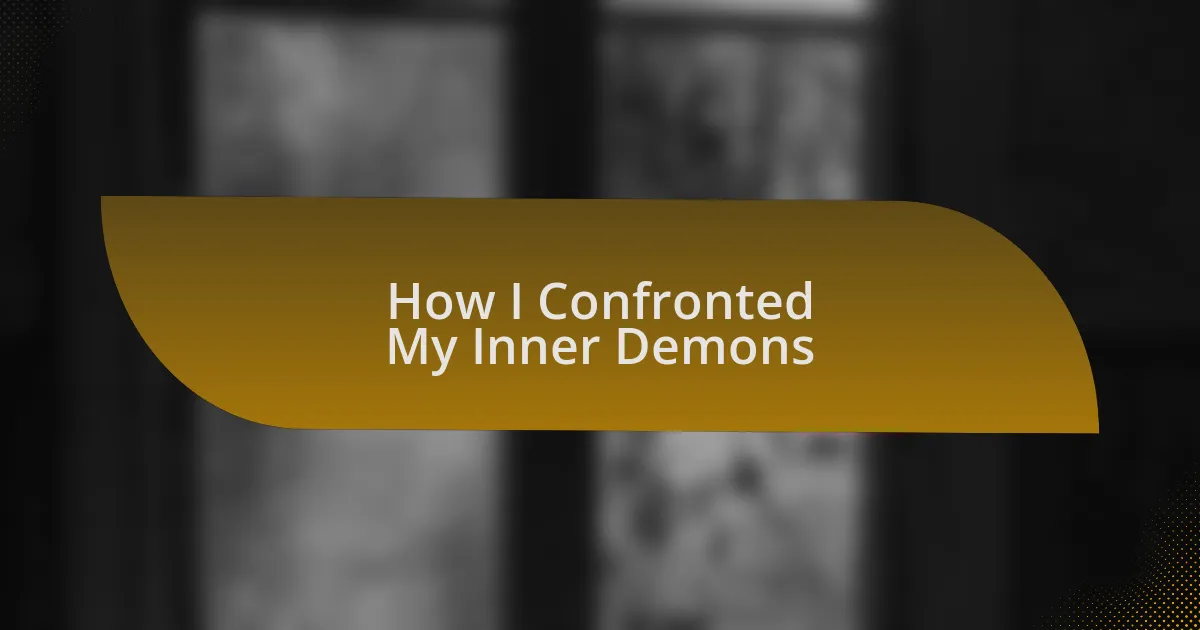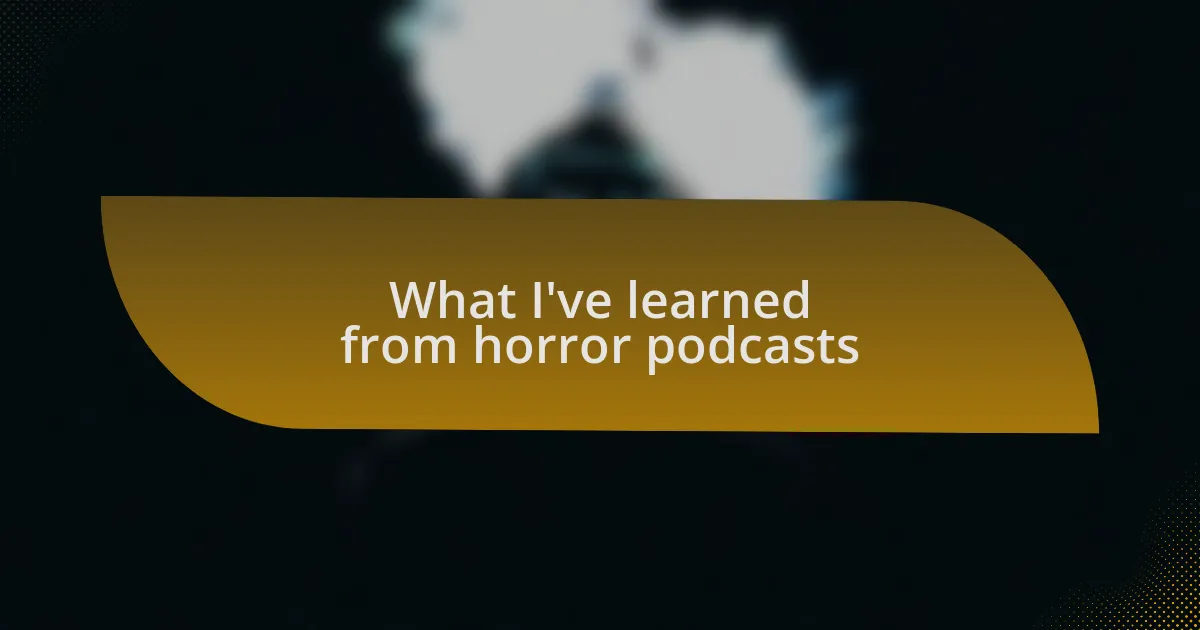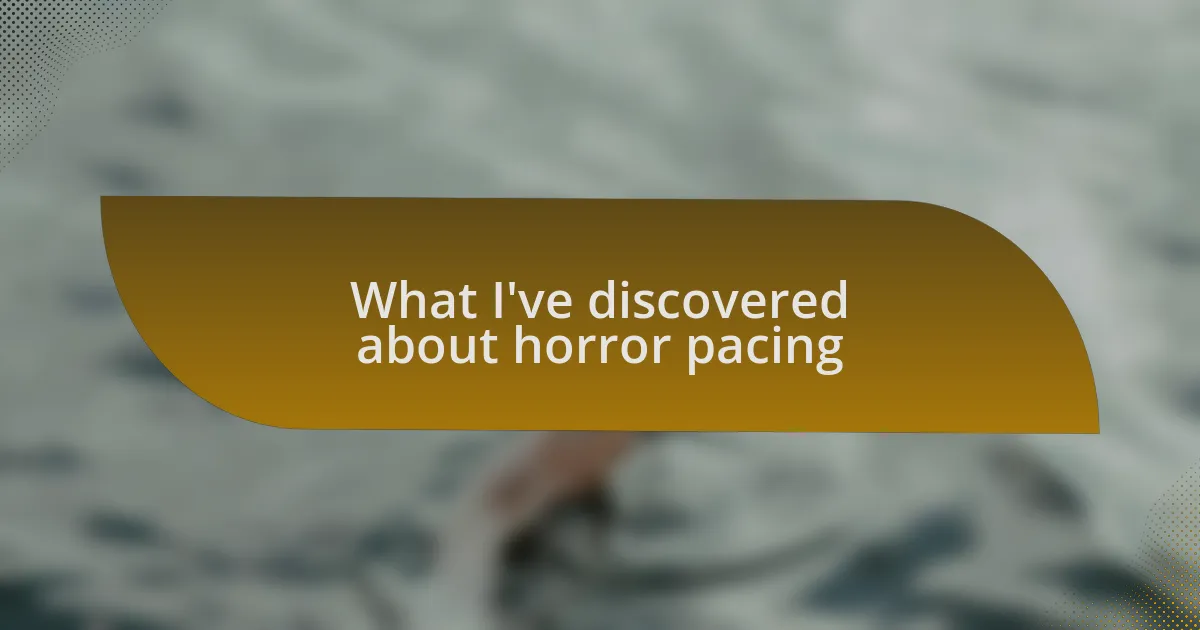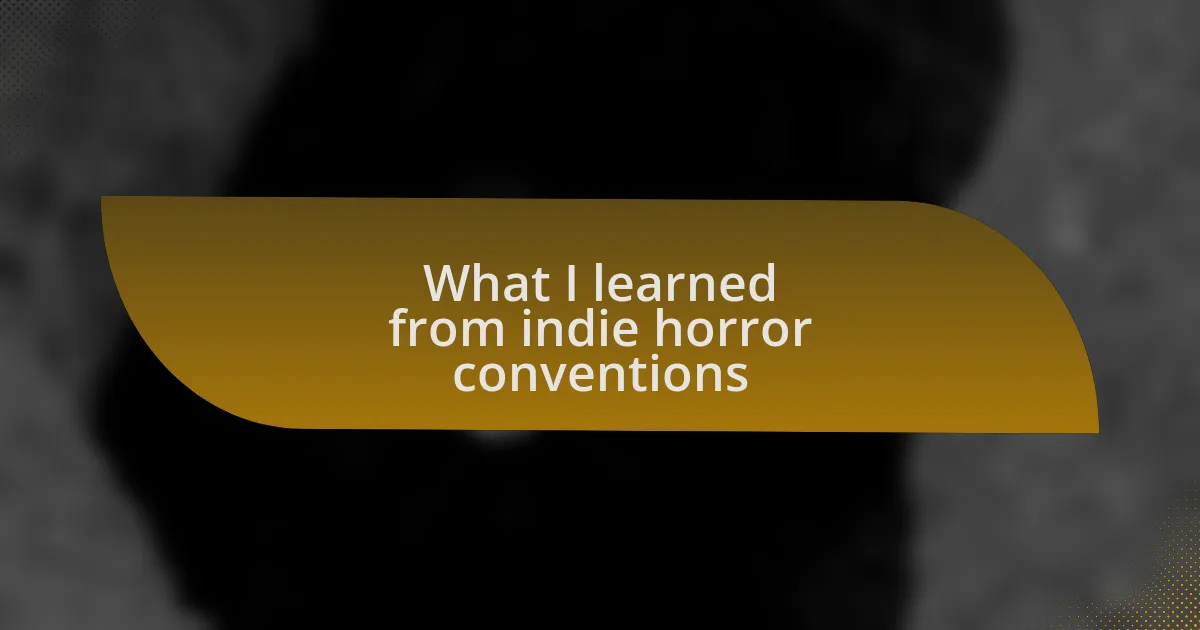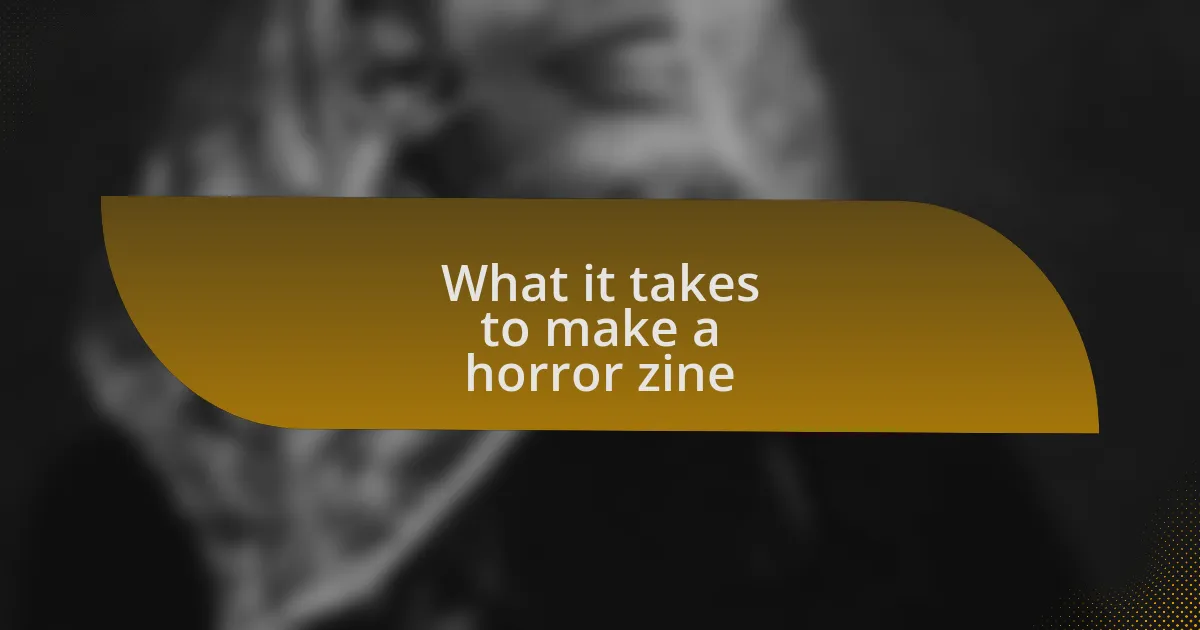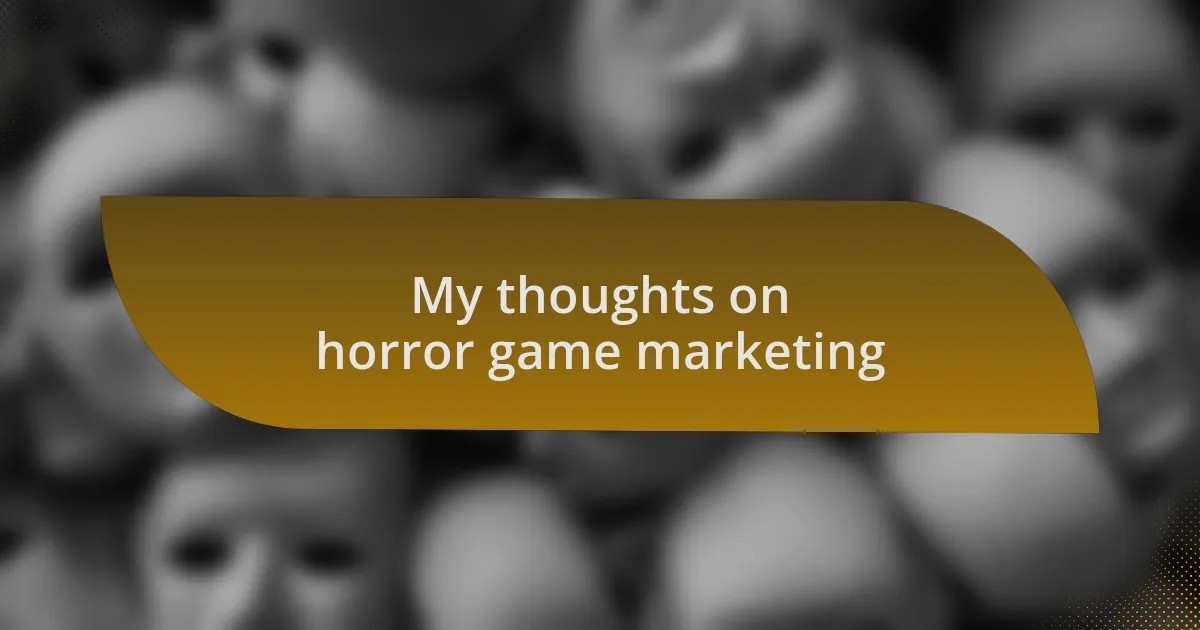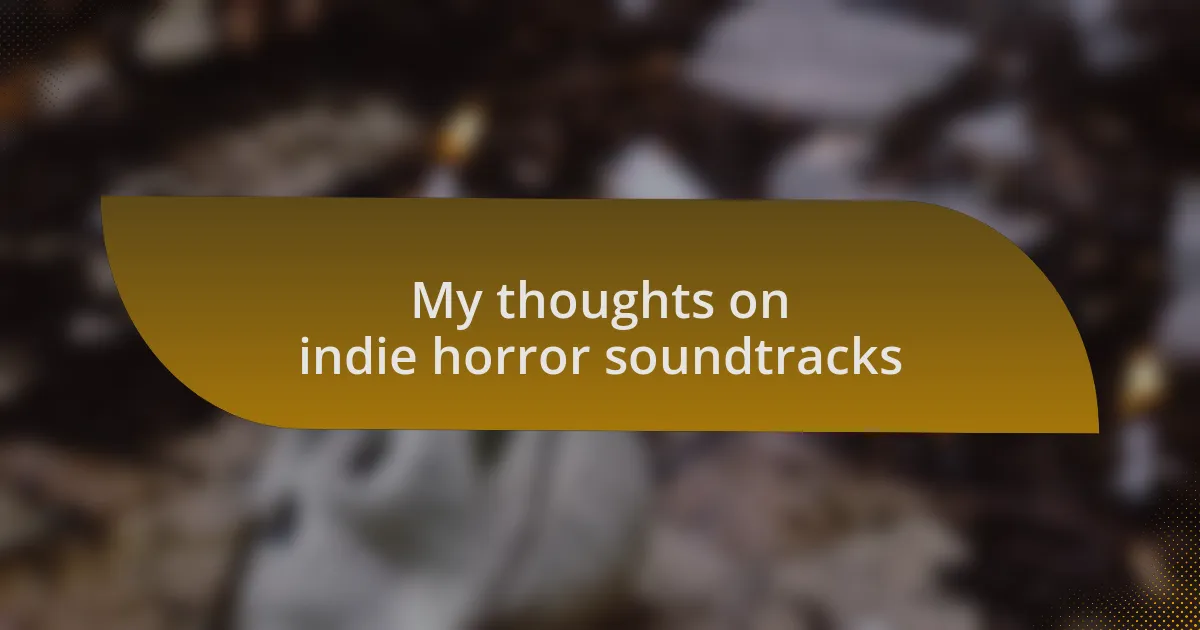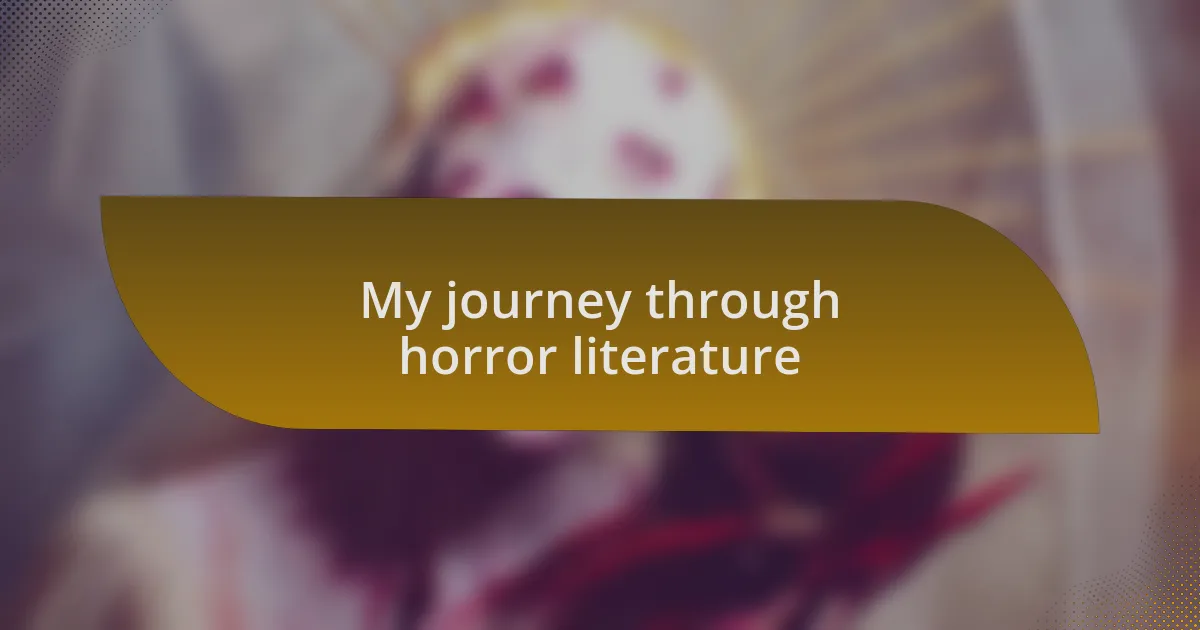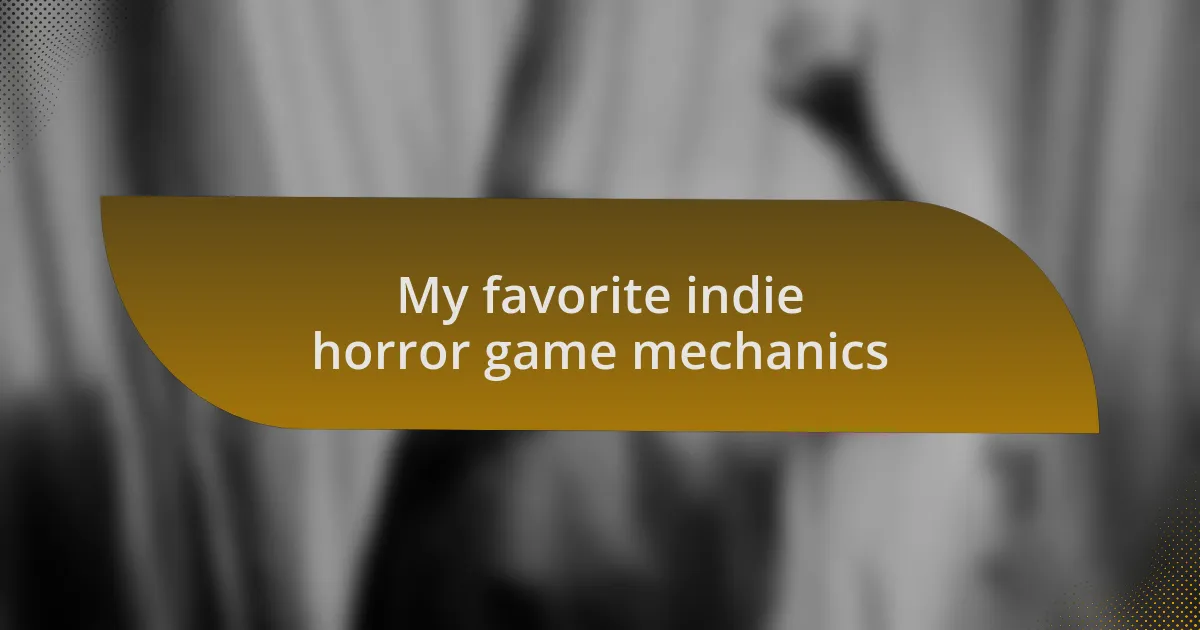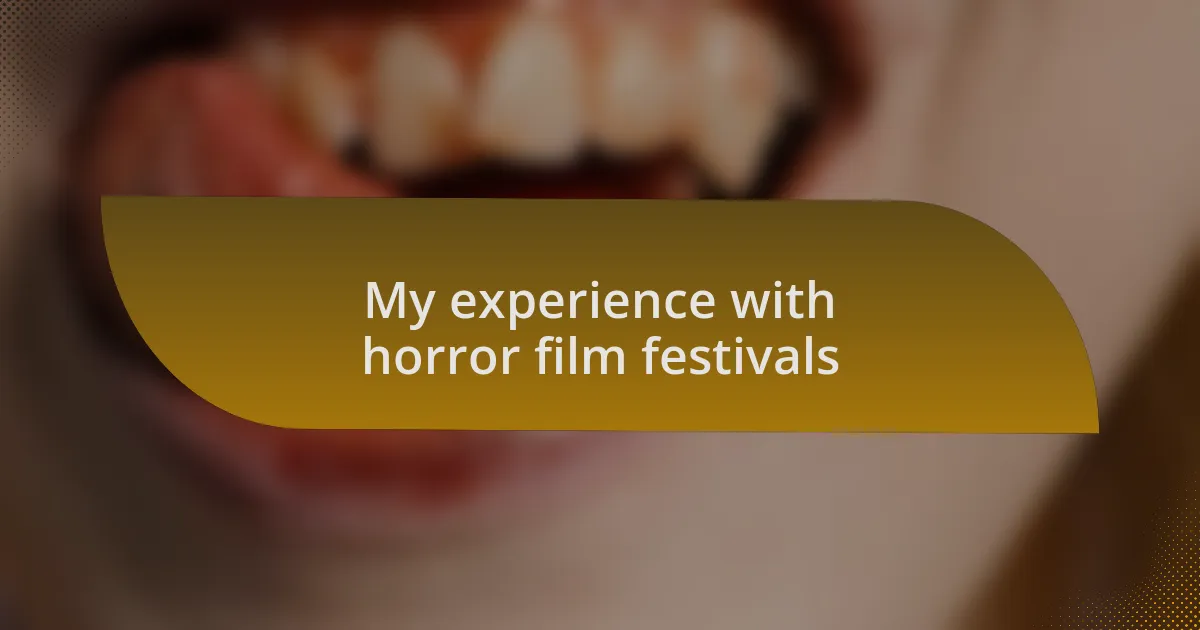Key takeaways:
- Horror films reflect societal anxieties and personal struggles, often embodying inner demons that challenge viewers to confront their own fears.
- Character experiences in horror narratives, such as dealing with grief or societal issues, resonate deeply and encourage self-reflection regarding personal and collective demons.
- Films like “Hereditary” and “The Babadook” illustrate how unresolved emotions can manifest as monsters, prompting viewers to acknowledge and confront their vulnerabilities for personal growth.
Author: Julian Ashford
Bio: Julian Ashford is a celebrated author known for his gripping thrillers and thought-provoking narratives. With a background in psychology, Julian skillfully weaves intricate plots that explore the complexities of the human mind and morality. His novels have been praised for their compelling characters and unexpected twists, earning him a dedicated readership. When he’s not writing, Julian enjoys hiking and exploring new cultures, often drawing inspiration from his adventures for his storytelling. He currently resides in the picturesque countryside, where he continues to craft stories that captivate and challenge readers.
Understanding horror movie themes
Horror movies often delve into the depths of human fears, reflecting societal anxieties and personal struggles. I remember watching a film that revolved around the fear of isolation, and it struck a chord with me. It made me wonder, how many of us grapple with loneliness in a world so connected?
Themes in horror can symbolize our inner battles. When I see a character facing an unseen monster, I can’t help but relate it to my own internal struggles. It’s fascinating to think about how these monsters often represent our deep-seated issues, like guilt or trauma. What if the real horror lies not in the supernatural, but in our minds?
Moreover, horror films often challenge the notion of good versus evil, blurring the lines between heroes and villains. I once felt a surge of empathy for a so-called “monster” whose backstory was revealed, prompting me to reconsider my own biases. Have you ever found yourself rooting for someone you thought was purely evil? This complexity adds richness to the genre, making us question not just the characters, but ourselves as well.
The role of inner demons
Inner demons often manifest in our lives as unresolved fears and insecurities, and horror movies uniquely capture that struggle. I recall a particularly chilling film that explored addiction; it resonated deeply with me because it reflected my own battles with temptation. Don’t you think that seeing these struggles onscreen can sometimes make us confront our reality in a way that words alone cannot?
The tension between facing these inner demons and the external horrors we encounter is palpable in many films. I remember feeling a knot in my stomach when a character faced their darkest fears head-on, reminding me of my own moments of vulnerability. Why do we shy away from facing these truths, even when they hold the key to our growth?
In a way, each horror movie acts as a mirror, reflecting our deepest anxieties and pushing us to confront them. I think back to scenes where characters’ emotional breakdowns mirror my own moments of despair. Have you ever felt that rush of recognition as you watch someone tackle their innermost fears? It’s that raw honesty that often makes horror not just entertaining, but profoundly relatable.
Iconic horror films featuring demons
When I think of iconic horror films that feature demons, “The Exorcist” immediately comes to mind. This film terrified me as a teenager; the thought of possession struck a chord with my own battle against the darker aspects of my personality. How unsettling is it to watch someone lose control, reflecting the fragility of our own minds?
“Hereditary” is another striking example that lays bare the generational trauma we often carry. The haunting presence of its demonic elements serves as a metaphor for the crippling weight of family secrets and the psychological demons we inherit. I couldn’t help but feel an eerie connection; the film forced me to think about how our past shapes us. Have you ever felt the shadows of your family’s past lurking in your psyche?
Lastly, “It Follows” explores the haunting nature of fear in a more contemporary way. The demonic entity in this film feels like an allegory for anxiety that never quite fades, much like the lingering doubts that plague my thoughts. Watching the characters try to evade an unrelenting force reminded me of my own attempts to escape fears that are always close behind. Isn’t it fascinating how these films can transform our personal struggles into gripping narratives?
Analyzing character struggles in horror
Character struggles in horror films often delve into the complexities of the human psyche. For instance, in “The Babadook,” the titular creature embodies the protagonist’s grief and depression, forcing her to confront her inner turmoil. I remember feeling my own heart race as she battled not just the monster, but her unresolved feelings of loss; it made me question how often we run from our emotions rather than face them head-on.
In “Midsommar,” the struggles are vividly displayed through the lens of trauma and the need for acceptance. The main character’s journey through grief during a seemingly idyllic festival creates a chilling juxtaposition that highlights the darkness lurking beneath the surface of joy. It spoke to my own experiences of seeking solace in places I thought would heal me, only to find that confronting pain is often the only way to move forward.
Moreover, “Get Out” provides a powerful exploration of societal demons, reflecting the internal fears that arise in the face of racism. Watching Chris grapple with his identity and safety left me pondering how our societal environment can become a horror in itself. Have you ever felt trapped in a situation that forced you to confront uncomfortable truths about yourself or the world around you? Such films resonate deeply because they challenge us to look at our demons, both personal and societal, and ask why we often deny their existence.
Personal connection to horror narratives
When I watch horror films, I often find myself resonating with the inner struggles of the characters. For example, in “Hereditary,” the descent into madness and family dysfunction strikes a nerve. I’ve had moments where family gatherings felt more like a pressure cooker, highlighting unspoken tensions and unresolved issues. It makes me ponder: how many of us mask our true feelings behind a veneer of normalcy?
In addition, the raw emotions portrayed in horror narratives can feel almost therapeutic for me. Take “The Witch,” for instance; it beautifully encapsulates the fear of being judged and ostracized. I recall a time when I felt out of place in my own circle, grappling with self-doubt. It leads me to question whether horror serves as a mirror, reflecting our worst fears back at us, forcing us to confront what we might otherwise avoid.
These films often compel me to delve into my own darkness. When I reflect on “It Follows,” the idea that we can’t escape certain consequences reminds me of my past regrets. How often do we try to run from our mistakes, only to have them catch up to us? Such narratives remind me that confronting my inner demons is not just essential; it’s necessary for growth and healing.
My journey with inner demons
There were times when my inner demons felt like shadows lurking just outside the light, whispering doubts and fears that seemed insurmountable. I vividly remember a particularly dark period when I watched “The Babadook,” and suddenly it struck me: the monster was not just on screen, but mirrored the grief and pain I was wrestling with inside. Have you ever felt something similar—where a film encapsulates your struggle so perfectly that it makes you confront the very things you try to hide?
As I navigated through my feelings, I discovered that horror offered a unique space for reflection. In another instance, “The Shining” revealed the chaotic depths of isolation and madness, which resonated with my own battle against loneliness. It was humbling to see my fears laid bare in a fictional narrative. How often do we acknowledge that our own turmoil can feel just as terrifying as any ghost story?
Each horror film has become a catalyst for my introspection. With “Midsommar,” the concept of confronting fear head-on was transformative; I found myself examining patterns in my life I had overlooked. I asked myself: what are these emotions trying to teach me? I started realizing that these inner demons, though formidable, also carry valuable lessons about resilience and self-acceptance.
Lessons learned from horror films
Horror films often invite us to face our deepest fears. For instance, after watching “Hereditary,” I was struck by how grief can manifest as a monster lurking in the corners of our minds. It made me question: can our darkest thoughts become more daunting if we ignore them? I realized that acknowledging these fears rather than shying away from them is a crucial step toward healing.
I recall watching “It Follows” and feeling an unsettling truth bubble to the surface: the inescapability of our past actions. The movie beautifully illustrates how unresolved issues can haunt us, much like the relentless entity chasing the characters. It compelled me to confront my own regret and ask myself, what burdens have I been carrying that weigh me down? The answer became clear—facing those burdens is not just necessary; it’s liberating.
Through these cinematic experiences, I’ve learned that horror can serve as a mirror reflecting our vulnerabilities. I remember feeling a sense of kinship with the characters in “The Witch,” as they grappled with societal and personal demons. This connection made me ponder how often do we allow fear to dictate our reality? In confronting these fears through film, I discovered that they can also propel us toward acceptance and transformation, a lesson that lingers long after the credits roll.
